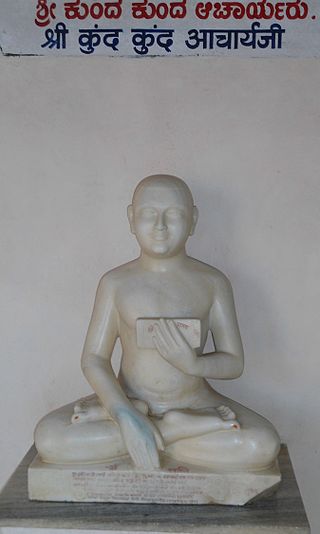
Mahavira, also known as Vardhamana, was the founder of Jainism and the 24th Tirthankara. He was the spiritual successor of the 23rd Tirthankara Parshvanatha. Mahavira was born in the early 6th century BCE to a royal Jain family of ancient India. His mother's name was Trishala and his father's name was Siddhartha. They were lay devotees of Parshvanatha. Mahavira abandoned all worldly possessions at the age of about 30 and left home in pursuit of spiritual awakening, becoming an ascetic. Mahavira practiced intense meditation and severe austerities for twelve and a half years, after which he attained Kevala Jnana (omniscience). He preached for 30 years and attained moksha (liberation) in the 6th century BCE, although the year varies by sect.

Mahavir Janma Kalyanak is one of the most important religious festivals in Jainism. It celebrates the birth of Mahavira, the twenty-fourth and last Tirthankara of present Avasarpiṇī. On the Gregorian calendar, the holiday occurs either in March or April.

Siddhartha was the father of Mahavira (Vardhamana), the 24th Jain Tirthankara. He was a Kshatriya King from the Ikshvaku dynasty and the ruler of the Nata, Ainwar (Light), Gyat or Jnatri clan in Kshatriya Kundagrama, a suburb of Vaishali. He was married to Licchavi princess Trishala.

Jain monasticism refers to the order of monks and nuns in the Jain community and can be divided into two major denominations: the Digambara and the Śvētāmbara. The monastic practices of the two major sects vary greatly, but the major principles of both are identical. Five mahāvratas, from Mahavira's teachings, are followed by all Jain ascetics of both the sects. Historians believe that a united Jain sangha (community) existed before 367 BCE, about 160 years after the moksha (liberation) of Mahavira. The community then gradually divided into the major denominations. However, no evidences indicate when the schism between the Digambaras and the Śvetāmbaras happened.

Trishala, also known as Videhadatta, Priyakarini, or Trishala Mata, was the mother of Mahavira, the 24th Tirthankara of Jainism, and wife of the Jain monarch, Siddhartha of Kundagrama, of present-day Bihar. She finds mention in the Jain texts.

The Sachchiya Mata Temple is a Jain temple located in Osian, near Jodhpur city in the Indian state of Rajasthan.
The Solar dynasty or Sūryavaṃśa, also called the Ikshvaku dynasty is a legendary Indian dynasty said to have been founded by Ikshvaku. In Hindu literature, it ruled the Kosala Kingdom with their capital at Ayodhya and later at Shravasti. They prayed to their clan deity Surya, after whom the dynasty formed its namesake. Along with the Lunar dynasty, the Solar dynasty comprises one of the main lineages of the Kshatriya varna in Hinduism.

Sudharmaswami was the fifth ganadhara of Mahavira. All the current Jain acharyas and monks follow his rule.
Jainism is an ancient Indian religion belonging to the śramaṇa tradition. It prescribes ahimsa (non-violence) towards all living beings to the greatest possible extent. The three main teachings of Jainism are ahimsa, anekantavada (non-absolutism), aparigraha (non-possessiveness). Followers of Jainism take five main vows: ahimsa, satya, asteya, brahmacharya (chastity), and aparigraha. Monks follow them completely whereas śrāvakas (householders) observe them partially. Self-discipline and asceticism are thus major focuses of Jainism.

Digambara is one of the two major schools of Jainism, the other being Śvetāmbara (white-clad). The Sanskrit word Digambara means "sky-clad", referring to their traditional monastic practice of neither possessing nor wearing any clothes.

Jainism is an Indian religion which is traditionally believed to be propagated by twenty-four spiritual teachers known as tirthankara. Broadly, Jainism is divided into two major schools of thought, Digambara and Śvetāmbara. These are further divided into different sub-sects and traditions. While there are differences in practices, the core philosophy and main principles of each sect is the same.

Acharya Chandana, known as Tai Maharaj by her devotees, is an Indian Jain nun of the Amarmuni Sampradaya. Chandana is the first Jain sadhvi to be awarded the title of Acharya and the Padma Shri. Chandana is known for her social engagement and for popularising the notion of 'seva' among the Jain community. She is the founder of Veerayatan, a non-profit, non-governmental organization based in Rajgir with centers in over ten countries.

Diwali in Jainism marks the anniversary of Nirvana or liberation of Mahavira's soul, the twenty-fourth and last Jain Tirthankara of the present cosmic age. It is celebrated at the same time as the Hindu festival of Diwali. Diwali marks the end of the year for Jains, and it likewise commemorates the passing of their twenty-fourth Tirthankara Mahavira and his achievement of moksha.

Kundalpur is a village in Nalanda district in the Indian state of Bihar. It is located about 2.5 kilometres from ancient Nalanda Mahavihara, 11 kilometres southwest of Bihar Sharif, and 80 kilometres southeast of Patna.

Ancient idols of Jain Tirthankara were found in archaeological expeditions in Badli, Bhiwani, Dadri, Gurgaon, Hansi, Hisar (Agroha), Kasan, Nahad, Narnaul, Pehowa, Rewari, Rohad, Rohtak and Sonepat in Haryana. Agrawal Jain community traces its origins from Hisar. Guptisagar Dham Tirtha at Ganaur is a religious tourist spot in Haryana. It is named after the Jain Acharya Guptisagar.

Jainism in Bihar trace a long history since the times of twenty-fourth Tirthankara Mahavira, who was born in Vaishali. The state of Bihar is considered to have played an important role in the development of Jainism.

Āchārya means the Head of an order of ascetics. Some of the famous achāryas are Bhadrabahu, Kundakunda, Samantabhadra, Umaswami, Sthulibhadra.
AcharyaDharasena was a Digambara monk of first century CE.

Uttarapurāṇa is a Jain text composed by Acharya Gunabhadra in the 9th century CE. According to the Digambara Uttarapurana text, Mahavira was born in Kundpur in the Kingdom of the Videhas.

Shri Atma Vallabh Jain Smarak also popularly known as Vallabh Smarak Jain Mandir Tirth is a Jain temple and a multi-faceted memorial in the sacred memory of Jain Acharya Shri Vijay Vallabh Surishwer Ji, located on GT Karnal Road, Delhi.















